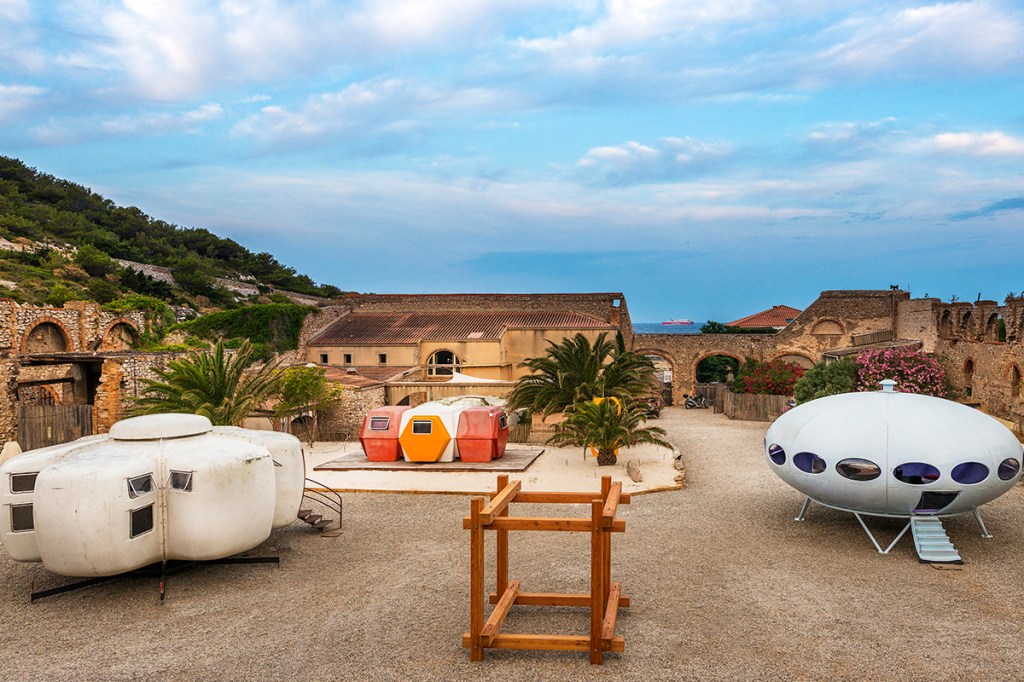In July, the Friche de l’Escalette—a sculpture park in Marseille, France—opened “Utopie Plastic,” an exhibition featuring models of futuristic, prefabricated plastic residences designed and manufactured in the late 1960s and early 1970s—just before the 1973 oil crisis that put an end to the utopian dream of owning a plastic vacation residence.
The Hexacube (1972) by Greek-French architect Georges Candilis, the Six-Shell Bubble House (1968) by French designer Jean-Benjamin Maneval, and the Futuro House (1968) by the late Finnish architect Matti Suuronen are the three rare structures showcased in the exhibition. Each model is furnished by plastic furniture including Maurice Calka’s Boomerang Desk with its integrated seat, Quasar Khanh’s Aerospace inflatable seats, and the Baby Molar chair by Wendell Castle. The show also features the modern sculpture Pavilion-Skulptur II (1969-1975), designed by the late Swiss architect Max Bill.
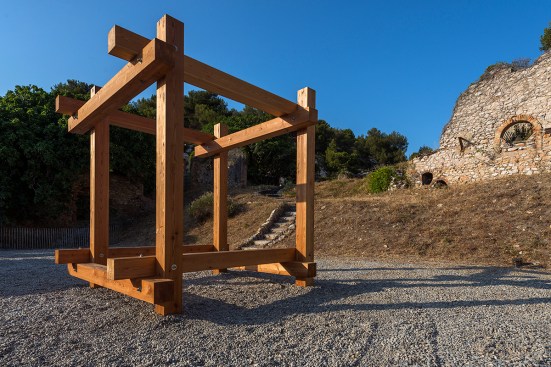
Christian Baraja
Pavilion-Skulptur II (1969-1975)
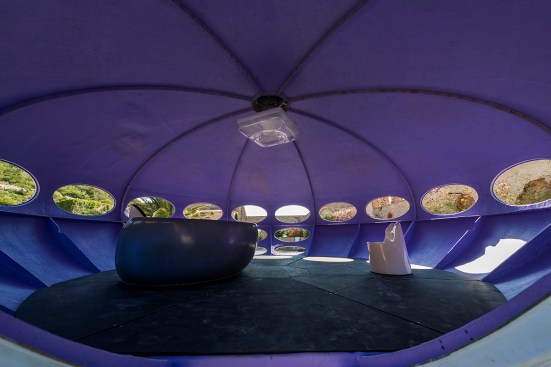
Christian Baraja
Made from reinforced polyester and fiberglass, the featured Hexacube model was originally part of a series of holiday retreats Candilis had designed for a beachfront community. This particular model is painted in bright red and orange colors.
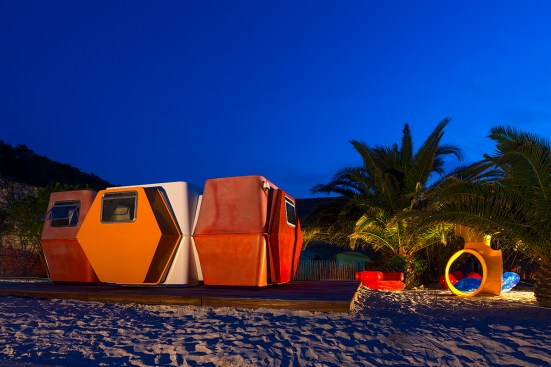
Christian Baraja
The Hexacube (1972)
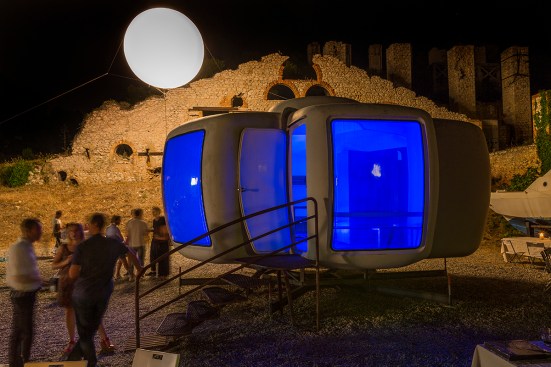
Christian Baraja
The Bubble House (1968)
Maneval’s bubble houses have been regularly showcased at various international design fairs, most recently at the 2016 Triennale Milano. Each residence is made of six polyester shells, that can be joined together to form clusters. The current exhibition features two of Maneval’s bubble houses: One is currently being restored on-site, and the other “is the only known example complete with its original interior fit-out,” according to the exhibition’s press release.
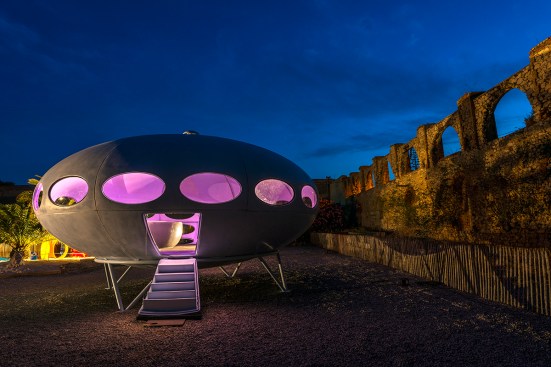
Christian Baraja
The Futuro House (1968)
Originally intended as a ski cabin for mountain heights in postwar Finland, this UFO-shaped residence is made from reinforced fiberglass and polyester plastic. Only sixty Futuro Houses were made, and today, they are scattered around the world. The current model was originally located in Mallorca.
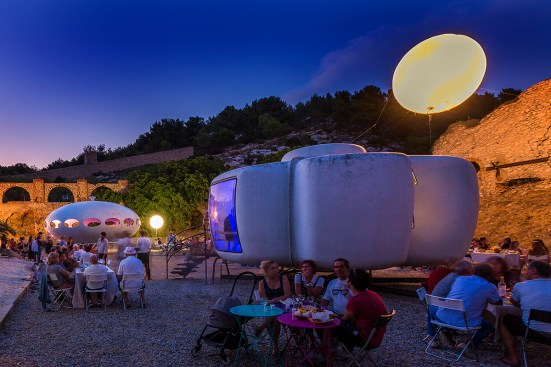
Christian Baraja
The Bubble House (1968)
“Utopie Plastic” runs through Oct. 1. Guided tours are offered free of charge and are only available by reservation.
